A recipe proposed by Leo from the Japandelice channel, specialized in Japanese cuisine.
Today, I want to talk to you about miso soup, this soup that’s so comforting after a tiring day that it becomes difficult to do without once you’ve adopted it.
But I have unfortunately noticed that some Miso soups served in restaurants in France really lacked flavor. Something is missing…
In this article, I will reveal to you the essential ingredient that Japanese people put in their Miso soup, which is often forgotten here, and I will also unveil a simple principle, known and used by all Japanese people, which is the balance of flavors.
What is miso soup?
It’s a delicious soup, and one of the staple foods in Japan: more than three-quarters of Japanese people consume it at least once a day.
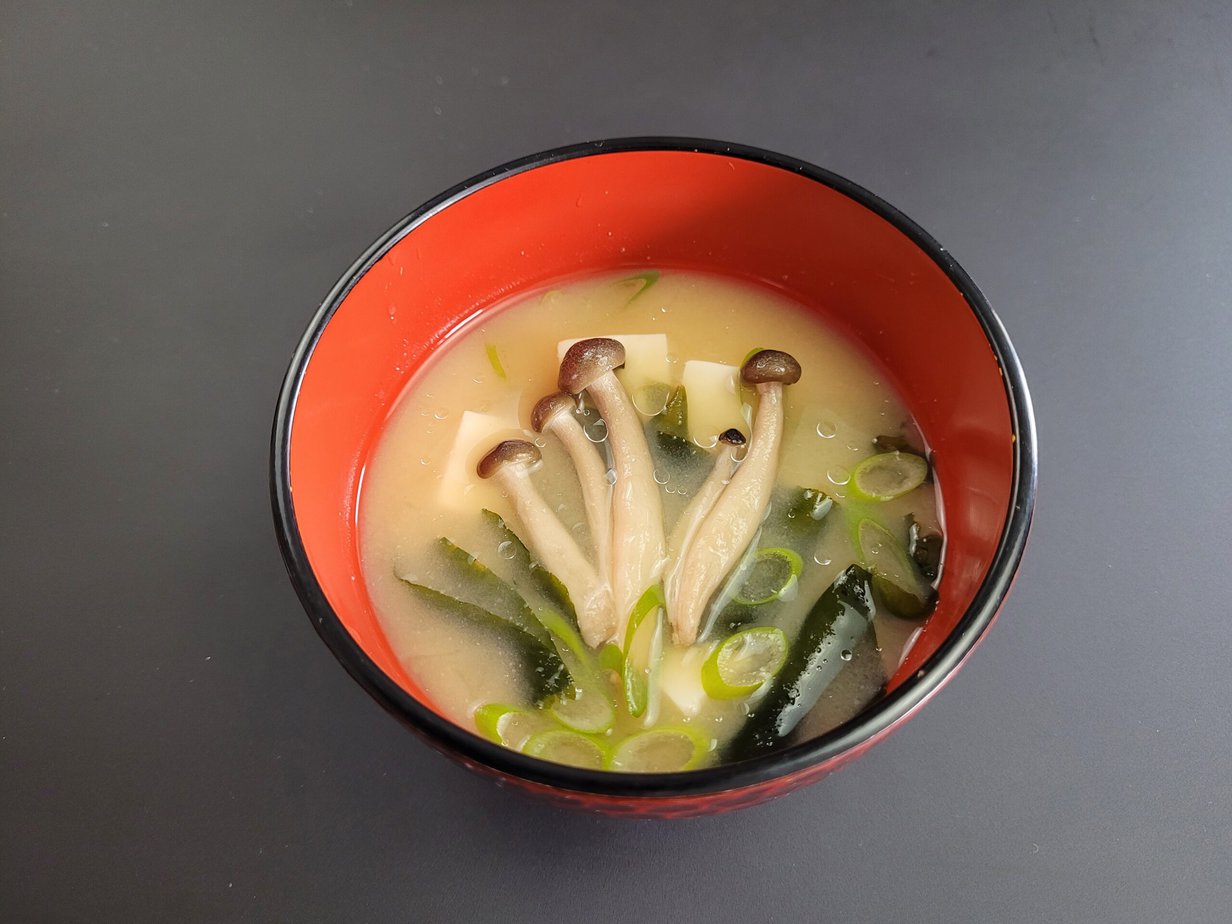
Most Japanese meals are served with a small bowl of steamed rice and a traditional Japanese soup called miso soup (味噌汁).
The ingredients of miso soup
Basically, miso soup is simply composed of 3 components:
- Dashi
- Miso
- Additional ingredients, such as tofu and wakame seaweed
- Here, we also add shimeji mushrooms
Depending on the region, season, and personal preferences, you can find many varieties of miso soup enjoyed in Japan.
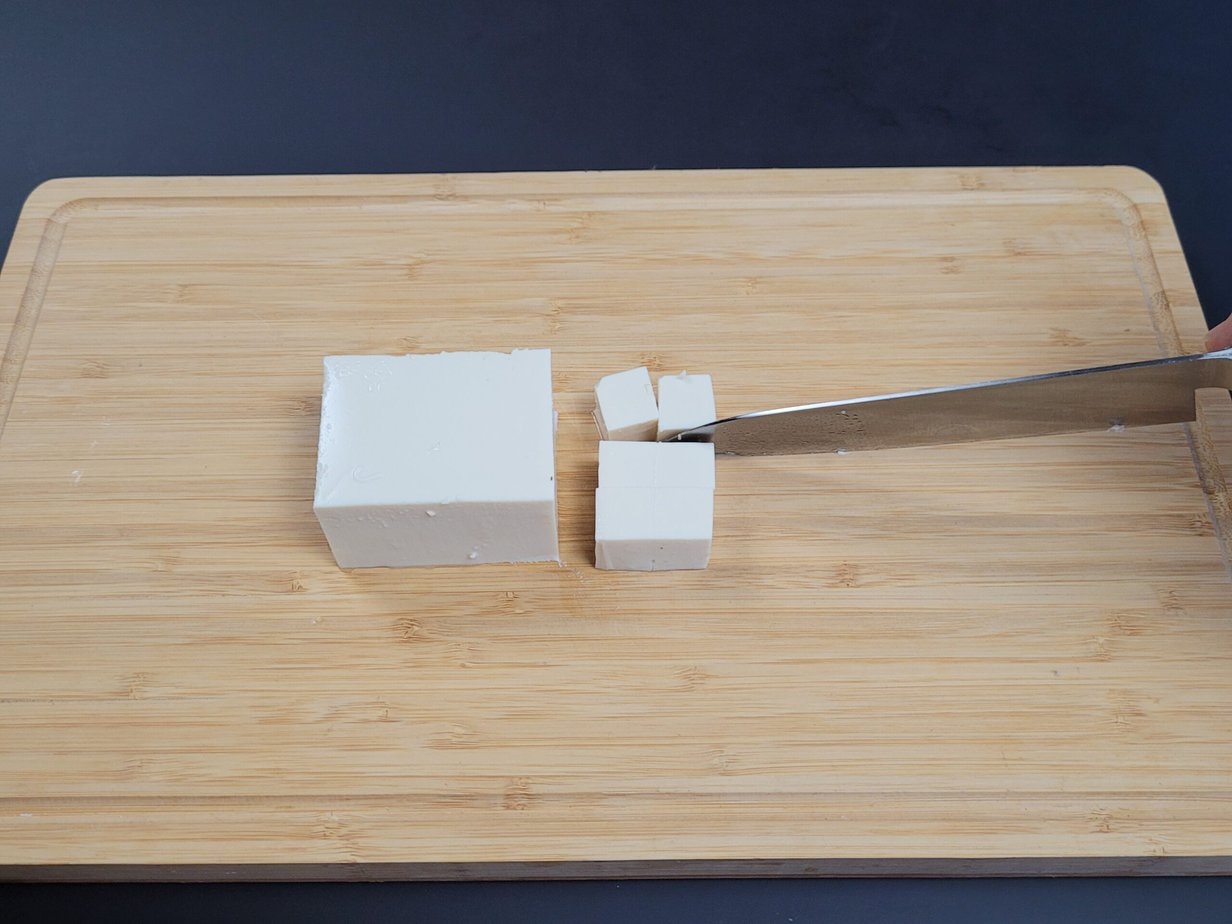
In addition to the classic combination of tofu and wakame that I’m showing you today, you can also use different savory ingredients such as vegetables, meat, and seafood to make the soup. That’s why you can never get tired of it, there are just so many variations
But its taste qualities often make us forget its other beneficial effects.
Benefits of miso soup
Low in calories and fat, but a source of plant protein, it’s the ideal partner for diets: as an appetizer before the main course, it helps control hunger. A bit like Peking soup.
Moreover, according to several studies, miso soup would have very beneficial effects on health: it would protect against certain cancers and would be beneficial for the immune system and the digestive system thanks to its probiotics from the fermentation of miso, which regenerate the intestinal flora.
However, it is not suitable for people following a low-salt diet.
The central element of miso: Dashi

We often hear critics of Miso soup say that it only tastes like salt water. This is because some establishments actually forget one of the essential ingredients of the soup: Dashi.
Dashi is the Japanese equivalent of chicken broth, and is made from ingredients that have been dried to concentrate flavors, such as kombu seaweed, shiitake mushrooms, bonito, which are then infused in water.
It’s one of the foundations of Japanese cuisine, and what makes up its DNA, since it’s used in sauces and soups (Ramen, Soba, Udon, Somen), but also in many other dishes.

Japanese cuisine works according to a simple principle, that of balance between at least 2 of the 5 flavors: salty, sweet, sour, bitter, and Umami, or the 5th flavor, as it’s nicknamed in France. It’s also the founding principle behind miso salmon
It’s a flavor that brings roundness in the mouth and induces addiction. Japanese cuisine systematically seeks the Umami taste in its dishes, particularly by adding this ingredient which is Dashi stock, and which contains this precious Umami.
You will find here in my little (free) recipe ebook a detailed method to learn how to make your own Dashi, with simple ingredients that can be ordered online or purchased in Asian grocery stores.

Authentic miso soup – 味噌汁
Ingredients
- 400 ml water
- 1 tablespoon of dashi the equivalent in teaspoons if using powdered dashi
- 2 tablespoons of white miso paste
- 1 pinch of dried wakame seaweed
- 1 slice of Tofu cut into small cubes about ten cubes
- 1 Green onion thinly sliced
- 1 small bunch of shimeji mushrooms
Instructions
- Heat the water with dashi over medium-high heat for 1-2 minutes
- Dilute the miso in a small ladle before incorporating it into the broth. The goal here is to prevent the miso paste from sticking to the bottom.
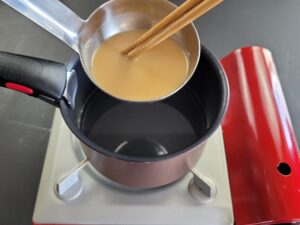
- Add the tofu cubes
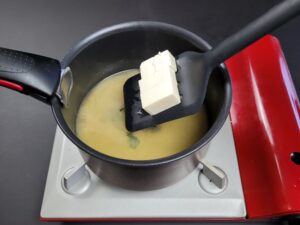
- Add the wakame

- Add the mushrooms, let cook for at least 3 minutes
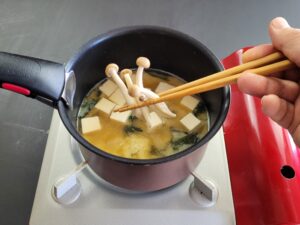
- As soon as the wakame seaweed is rehydrated, pour the broth into a small bowl and garnish with green onions
Notes
Turn off the heat when the water starts to simmer, and it’s preferable to add the miso paste at the end of cooking.

